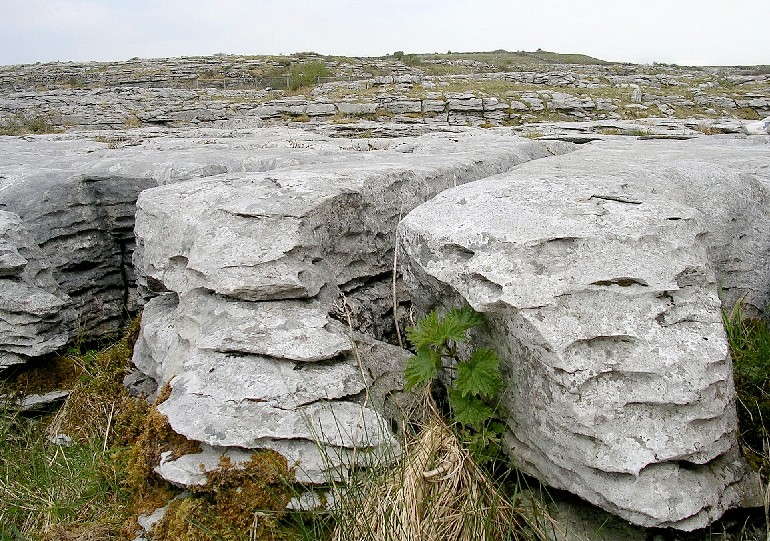Everywhere you look in the Burren there are large slabs of ROCK....the most famous attraction is an ancient tombstone made of rocks....stone ring forts.....church ruins made of rocks.....fields full of rocks......stone walls everywhere.....rocks, rocks, more rocks......rocks!
Geologically the Burren is a huge plateau made up of limestone slabs. The slabs are called 'clints' and the vertical fissures between the clints are called 'grikes'. Over time water has drained down between the slabs creating underground caves. We visited one called the Aillwee Cave that was formed by an underground river more than 2 million years ago.
There were supposed to be legless lizards slithering among the
grikes but we didn't see any. We did see cows searching for grass
between the clints. There were few sheep in this area; I guess sheep aren't rock lovers.

built by Druids about 2500 B.C. It is located in a farmer's cow pasture on R480. The farmer charges a small fee for walking
across his clints to see the Tomb. The stone slabs are massive; it is amazing that they were moved into this position without modern equipment.
